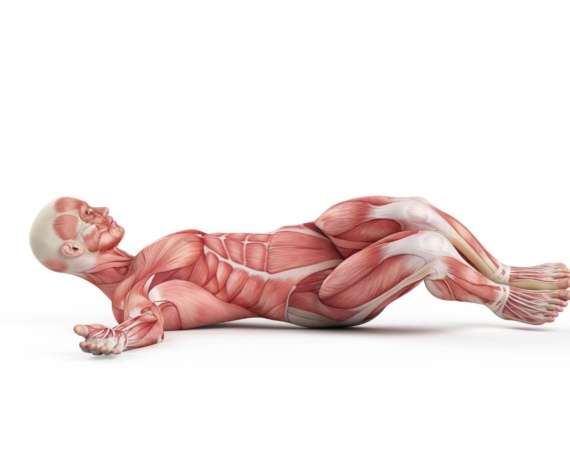
How strong are your leg muscles? Challenge your leg strength by holding the wall sit exercise for 60 seconds.
When it comes to exercise, most trainers seem to have come to the conclusion that complicated exercise plans are better. However, sometimes, simple, tried-and-true exercises are the best options.
And if simple is what you’re looking for, wall sits are just about as simple as it gets.
The wall sit exercise requires an isometric contraction from the quad muscles, along with some extra stabilization work from a few other key muscles in the lower body.
Sometimes, I’ll use the wall sit as an unofficial benchmark of lower body endurance for my clients (1). I generally find that if a person can hold a wall sit for one minute or longer, he or she is starting with a good amount of strength.
If not, we have some work to do. But that’s ok! Everyone has some deficits and weaknesses throughout the body that need to be addressed.
In this post, I’ll provide an overview of the wall sit exercise and discuss some ways in which you can vastly increase your lower body endurance, and thus, your wall sit time.
Wall Sits 101

As was mentioned in the introduction, wall sits require an isometric contraction. This is the same type of contraction required during a plank.
Isometric contractions differ from concentric and eccentric contractions, which are those seen in more traditional exercises like squats and push-ups.
Because of this, wall sits are generally “easier” to perform than some other, more complex exercises. This is not to say that wall sits are easy, they are quite difficult! I’m merely implying that they’re a good, simple starter exercise.
What Wall Sits Do for Your Body
Truth be told, wall sits won’t provide as much benefit as some other forms of exercise.
For instance, going for a long walk will lead to a lowered risk of disease, improved cardiovascular endurance, and a host of other benefits.
That being said, wall sits do provide significant benefits for the lower body.
The movement can help improve muscular endurance, knee health, core strength, and even balance (2).
How to Perform the Perfect Wall Sit
Now, without further ado, let’s take a look at how, exactly, you should go about performing the wall sit.
- Place your back against a firm, smooth wall.
- Then, place your feet a few feet in front of you and away from the wall.
- Next, slowly bend your knees as you slide your buttocks toward the ground.
- Once your thighs are parallel with the ground, hold the contraction for as long as you can.
- Aim for a total of 4 minutes of holds, in as few sets as possible. Complete this exercise 3 times per week.
Ways to Improve Your Wall Sit Time
There are a number of ways to improve your wall sit.
One such way is to practice partial range of motion squats. By performing squats to whatever degree you can, you’ll emphasize the same muscles used during wall sits. This is perhaps the best way to increase your lower body endurance and strength.
Another way to improve your wall sit is to work on the individual muscles involved in the exercise. You can perform straight leg raises, quad extensions, bridges, and other movements. This will work each of the muscles involved with the wall sit.
Also, you can simply just perform wall sits and keep trying to increase your hold time!
The Bottom Line
The wall sit is a great exercise that can be safely used by most individuals. If you have any concerns about performing wall sits yourself, be sure to schedule a visit with an exercise professional, such as a physical therapist for an evaluation.
Works Cited
- Hughes, D. C., Ellefsen, S., & Baar, K. (2018). Adaptations to Endurance and Strength Training. Cold Spring Harbor perspectives in medicine, 8(6), a029769. https://doi.org/10.1101/cshperspect.a029769
- Cho M. (2013). The effects of modified wall squat exercises on average adults’ deep abdominal muscle thickness and lumbar stability. Journal of physical therapy science, 25(6), 689–692. https://doi.org/10.1589/jpts.25.689


